The Butterflies of the World Foundation
A Non-
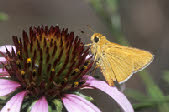
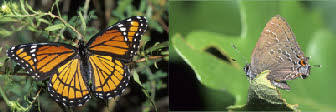
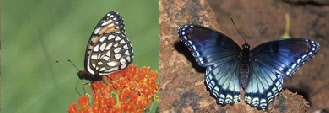
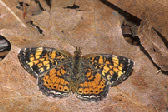
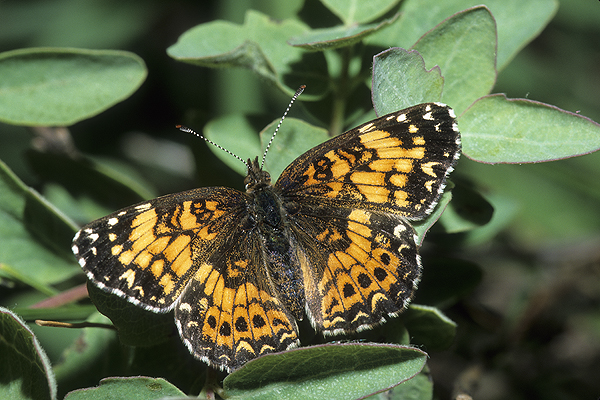
Gorgone Checkerspot
Chlosyne gorgone, Hübner, (1810)
Subfamily Nymphalinae
Tribe Melitaeini
Taxonomy
The family Nymphalidae is the largest butterfly family and includes about 6,000 species which are further divided up into 12 subfamilies. The common name for the family is the Brushfoots or Brushfooted Butterflies. This strange name is because the first pair of legs are significantly reduced, sometimes to mere stubs, and look like little brushes. Some of the most common and well known species are in this group such as the Monarch, Red Admiral, Blue Morpho and Painted Lady. Some of the longest lived butterflies are in this family with some species living over 10 months as adults. The Brushfoots are distributed worldwide, with the highest diversity found in the tropics. With this variety, there is also quite a difference in behavior, adult food choices and habitat preference from species to species.
All photographs, artwork, text and website design are the property of The Butterflies of the World Foundation (unless otherwise stated) and are protected under national and international copyright laws. Photographs, artwork or text on this website may not be reproduced in any way without prior written consent of The Butterflies of the World Foundation.
Chlosyne gorgone, Denbigh Experimental Forest, McHenry County, North Dakota, 4 June
2003 Ref
#: I-
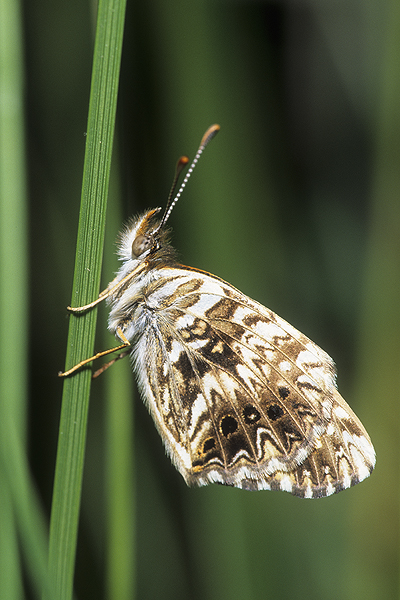
Chlosyne gorgone, Denbigh Experimental Forest, McHenry County, North Dakota, 4 June
2003 Ref #: I-
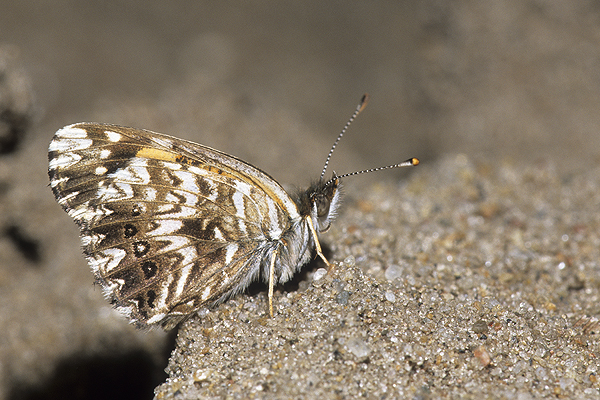
Chlosyne gorgone, Denbigh Experimental Forest, McHenry County, North Dakota, 4 June
2003 Ref
#: I-

Chlosyne gorgone, Square Butte, Little Missouri National Grassland, Golden Valley
County, North Dakota, 16 May 2004 Ref
#: I-

Chlosyne gorgone, mated pair, Denbigh Experimental Forest, McHenry County, North
Dakota, 4 June 2003 Ref
#: I-
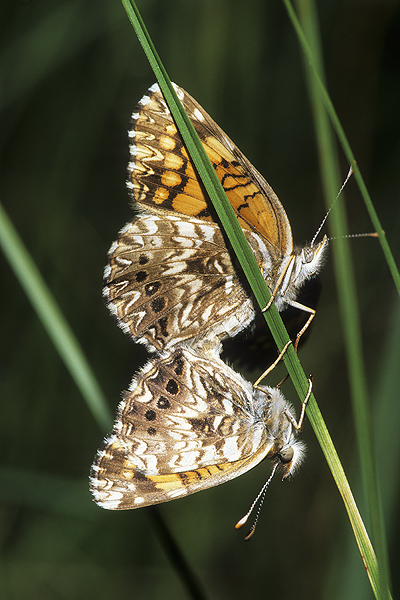
Chlosyne gorgone, mated pair, Denbigh Experimental Forest, McHenry County, North Dakota, 4 June 2003
Ref #: I-
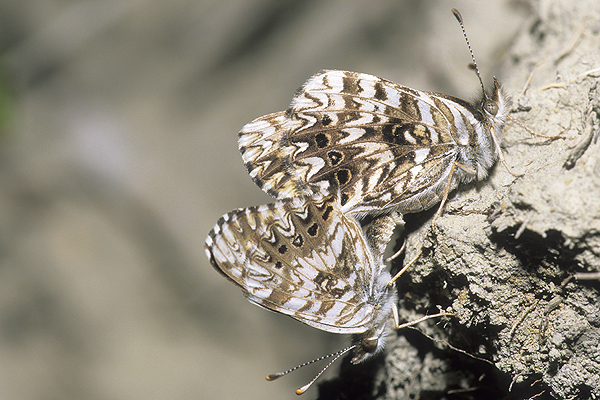
Chlosyne gorgone, mated pair, Square Butte, Little Missouri National Grassland, Golden
Valley County, North Dakota, 8 May 2004 Ref
#: I-
General Information:
Chlosyne gorgone belongs to the subfamily Nymphalinae. Its range is the Great Plains and surrounding states with a few isolated colonies in the Appalachians and the east slope of the Rocky Mountains. Its preferred habitat includes ridges, prairies, streamsides, open hardwood forests, old fields and forest edges.
Lifecycle:
The larval food source includes several plants in the family Asteraceae including sunflower, Helianthus sp., and crosswort, Lysimachia sp. Males perch or patrol to find females. Females lay eggs in clusters on underside of host plant leaves. Caterpillars eat leaves and young caterpillars feed in groups. Third instar caterpillars hibernate.
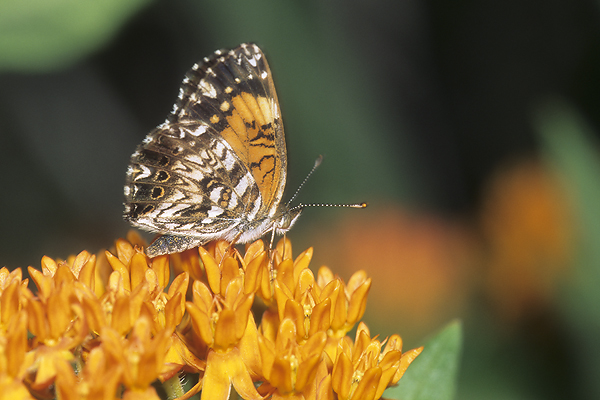
Chlosyne gorgone, Lexington Wildlife Management Area, Cleveland County, Oklahoma,
16 May 2012 Ref
#: I-
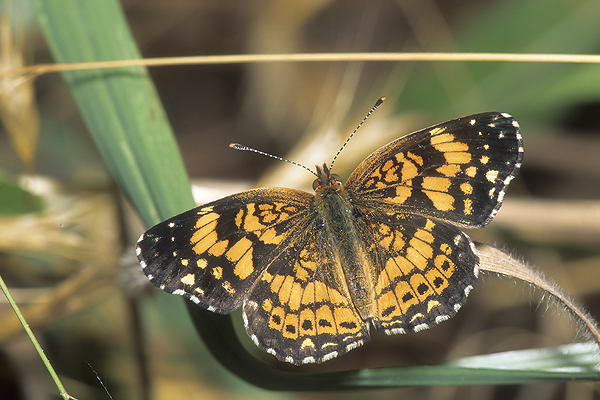
Chlosyne gorgone, Lexington Wildlife Management Area, Cleveland County, Oklahoma,
31 May 2012 Ref
#: I-
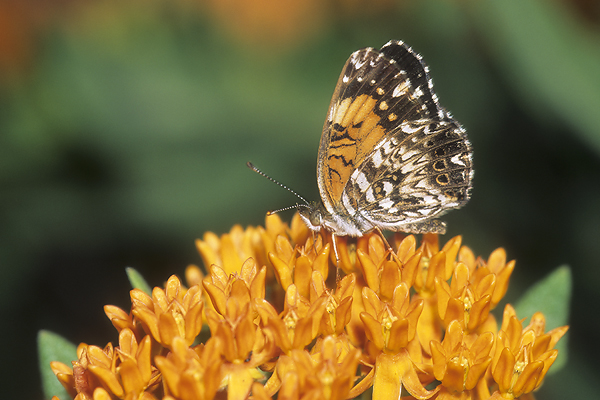
Chlosyne gorgone, Lexington Wildlife Management Area, Cleveland County, Oklahoma,
16 May 2012 Ref
#: I-
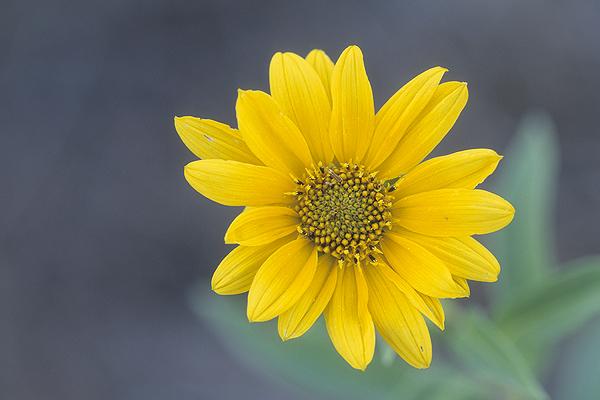
Maximilian Sunflower, Helianthus maximilianii, a common larval food source, Lexington
Wildlife Management Area, Cleveland County, Oklahoma Ref #: F-
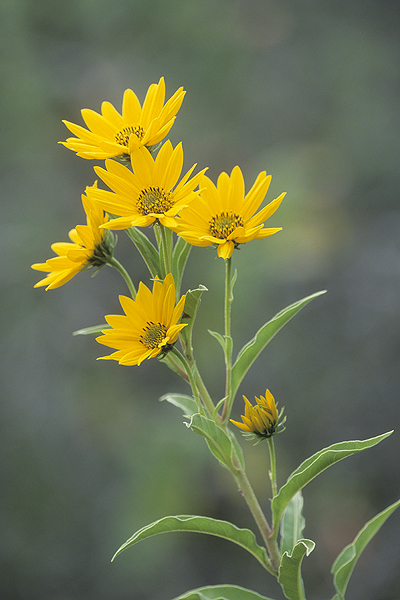
Maximilian Sunflower, Helianthus maximilianii, a common larval food source, Lexington
Wildlife Management Area, Cleveland County, Oklahoma Ref #: F-
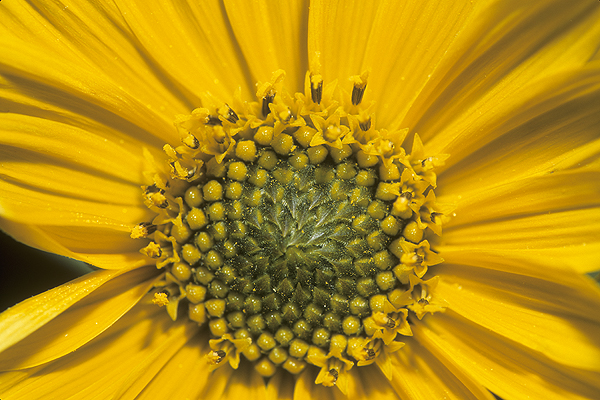
Maximilian Sunflower, Helianthus maximilianii, a common larval food source, Lexington
Wildlife Management Area, Cleveland County, Oklahoma Ref
#: F-
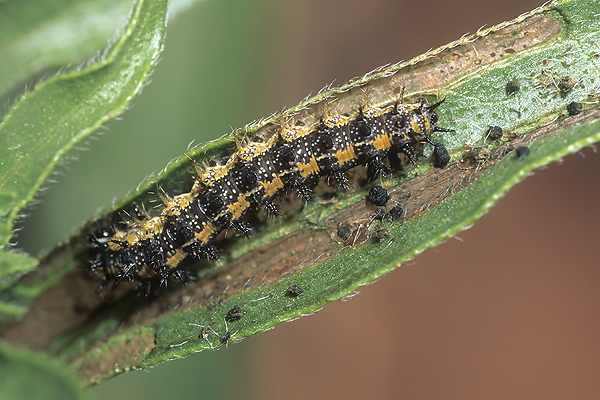
Chlosyne gorgone, larva on Purple Coneflower, Echinacea sp., Lexington Wildlife Management
Area, Cleveland County, Oklahoma, 9 May 2012 Ref #: I-
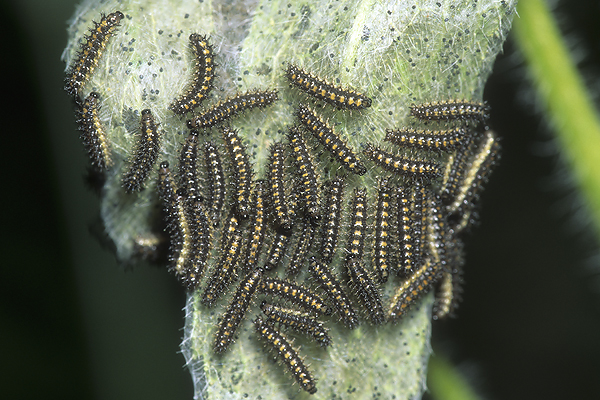
Chlosyne gorgone, larvae feeding gregariously on Black-